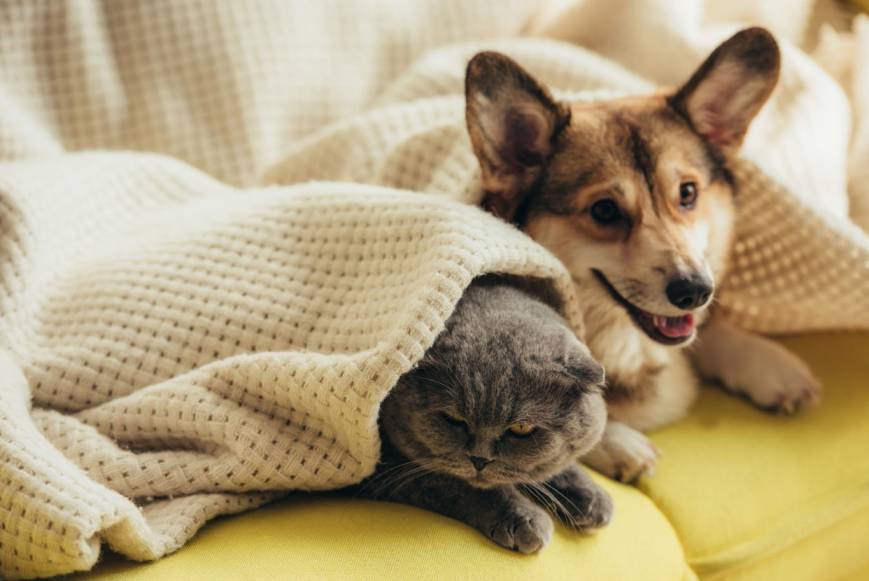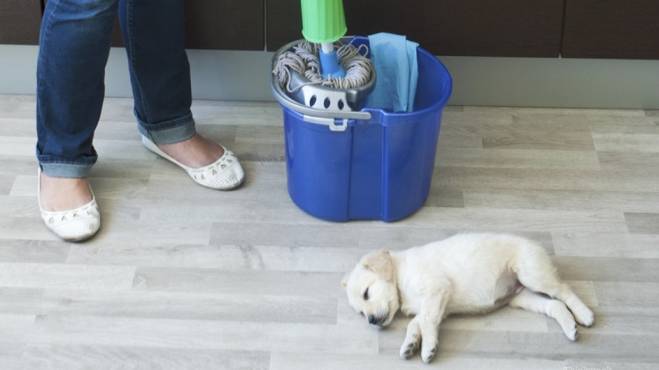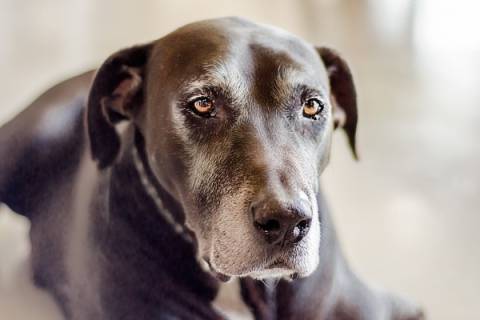As dogs get older, they begin to show their age in different ways. Some dogs’ appetite may even change over the years, which can lead to a loss of interest in their food and eating.
Connect with a verified veterinarian in minutes. Licensed vets are available 24/7 to answer your questions. No need to worry about your furry family member.
What should you do if your older dog doesn’t want to eat? The answer isn’t clear-cut, and it can be challenging to find a solution.
In this article, we’ll take a look at some common reasons older dogs lose interest in food and what you can do to make sure your dog eats enough and enjoys it! Let’s get started!
Common Reasons Older Dogs Don’t Want to Eat
There are some health issues that can cause an older dog to not eat. These can include:
- Diabetes
- Kidney failure
- Liver disease
- Dental problems
- Addison’s disease
- Cancer
- Stress & anxiety
- Picky eater
- Certain medications can affect appetite
- Heart problems
- Canine cognitive dysfunction (similar to Alzheimer’s in humans)
- And more
Because there are so many different reasons a senior dog won’t eat, the first thing you should do is call the vet and make an appointment. The vet can give your dog a checkup just to make sure everything’s OK, and there are no underlying health issues that need treatment.
Your vet can provide you with information and helpful ideas on how to get your dog to eat again. They may also include information on how many calories, how much protein, and more your dog requires as a senior.
How Many Calories Does an Older Dog Need?
As a dog gets older, he generally requires fewer calories. This is because the older dog’s metabolic rate slows down, which leads to fewer calories burned. This, in turn, leads to food being stored as fat.
However, as dogs become more advanced in years, they tend to stop gaining weight and start to lose weight. They can become quite thin. This is because they aren’t eating enough and/or aren’t getting enough calories. They need more calories in order to put on weight.

Review symptoms, medications & behavior to keep your pets healthy with a Vet Online in just minutes.
Ask a Vet Live NowHow Much Protein Does an Older Dog Require?
Older dogs continue to need protein to maintain muscle. The problem is that older dogs tend to lose muscle mass as they age, which leads to lower protein reserves in their body. Without the right amount of protein, the immune system may also start to fail, and the body won’t be able to deal with physical trauma, infections, stress, and more.
The body simply runs out of amino acids, which are needed for tissue repair and energy. For these reasons, senior dogs need an increased protein to calorie ratio. About 25% of calories should come from protein for an older dog.
How Much Fiber Does an Older Dog Need?
Too much fiber in an older dog’s diet can cause problems. When dog food has higher levels of fiber, it may also have fewer calories. Older dogs need more calories, not fewer. Fiber can also make dog food more difficult to digest for senior dogs.
However, senior dogs still need some fiber in their diet. Fiber can help with constipation, glucose regulation, and more. In this case, dog food that contains beet pulp can be a good choice for older dogs. This is because the beet pulp helps regulate glucose and improves the digestion of nutrients.
If you have questions about the type of food that’s best for your dog, be sure to ask the vet. They will have the best advice and guidance for your older dog’s nutritional requirements.
How to Get Your Dog to Eat?
Now, how can you get your older dog to eat? As long as the vet has said your dog’s health is OK, then you might try these methods to get your senior fur baby eating again!
1). Warm Your Dog’s Food
Cold food doesn’t give off nice aromas or taste all that good. So, if your dog isn’t eating, you might try heating his food up. Heat it up to warm it, not make it too hot. Just warm it enough that your dog can smell the food. That’s a great way to get older dogs to eat!
2). Make Home Cooked Dog Food
Some older dogs really perk up when they smell the homemade dog food! The smell and flavors may be more intense than dry or canned dog food. This may be enough to get your dog eating again. You can try chicken and barley, lamb and rice, and so on.
If you’re not sure what to include in your dog’s homemade food, then be sure to ask the vet. They’ll be able to let you know which foods to avoid and which foods are best for your fur baby.
3). Use Bottle Flavor Enhancers or Dog Food Toppers
Another option to get your dog eating is to add a bottled flavor enhancer to his meals. For instance, you could try adding Instinct Grain-Free Dog Food Topper Gravy to your dog’s food. This is a flavor enhancer specially formulated for dogs. These make the food taste and smell better to your senior dog.
You can also choose other types of dog food toppers. These are dry and can be sprinkled on top of your dog’s normal food. Try Stella & Chewy’s Freeze-Dried Raw Marie’s Magical Dinner Dust for Dogs.
4). Add Bone Broth to Your Dog’s Food
You can also try adding homemade bone broth to your dog’s meals. Just make the broth as you normally would, but leave out garlic, onions, and other ingredients that are toxic to dogs. Avoid using too much salt, as this can cause health problems, too.
When the broth is done, then simply add some to your dog’s regular dog food. We’re pretty sure he will become very excited by the new smell and taste!
Summing It Up
Older dogs can sometimes lose interest in eating for various reasons. So, if your senior dog stops eating, then be sure to take him to the vet for a checkup. It’s important to make sure your dog has no serious health issues that may be causing him not to eat.
Once the vet says your dog is healthy, then try the methods outlined above. As always, if these methods don’t work and/or you have questions about how to get your dog to eat, then be sure to contact your vet. They are the best source of information when it comes to your dog’s health.
Connect with a verified veterinarian in minutes. Licensed vets are available 24/7 to answer your questions. No need to worry about your furry family member.

Kim
Kim is a talented author, who loves animals especially dogs. She engaged in writing books and articles relating to animals a decade ago. Kim resides in Chicago with her husband and son. The family is the proud owner of a dog and a parrot (Jack and Lily). Kim wanted more than these two pets, but her husband put his foot down... She often visits elementary schools to talk to the kids about what she learned about pets and how they could learn from them.
Review symptoms, medications & behavior to keep your pets healthy with a Vet Online in just minutes.
Ask a Vet Live Now



